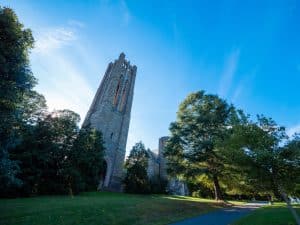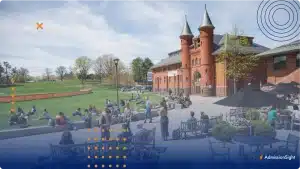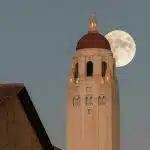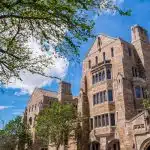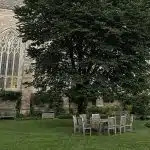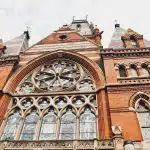Little Ivy League schools are a group of prestigious liberal arts colleges known for their rigorous academics, small class sizes, and close-knit communities.
The term emerged in the 1950s and is inspired by the Ivy League—showing that they also have strong academics, prestigious reputations, and a focus on producing well-rounded graduates but without formal athletic or institutional ties.
So what are the Little Ivies? In this blog, we’ll give a list of Little Ivies, discuss what characterizes small Ivy League schools, and tips on applying for them.
- What Are the Little Ivies?
- List of Little Ivies
- How to Get Into Little Ivy League Schools
- Frequently Asked Questions
- Takeaways
What Are the Little Ivies?
The Little Ivies are a group of highly selective liberal arts colleges renowned for their academic rigor, intimate learning environments, and strong emphasis on undergraduate education.
Despite the term, they are by no means inferior to Ivies.
The term “Ivy League” actually has its roots in football in 1933, when New York Herald Tribune Stanley Woodward used the phrase “ivy colleges” to describe eight ivy-covered schools with common athletic programs. Eventually, the Ivy League was officially founded in February 1954, although athletic competition between the schools didn’t start until 1956.
As time went on, the term also became synonymous with “older schools” and “elite schools.” As such, “Little Ivies” came to refer to schools that aren’t part of the Ivy League but share the same commitment to excellence.
Below is a quick look at the differences between the original Ivies and Little Ivies:
| Factors | Ivy League Schools | Little Ivy League Schools |
| Size and focus | Generally larger universities with diverse graduate programs, research facilities, and professional schools. | Smaller institutions focusing on undergraduate education and personalized learning experiences. |
| Curriculum and education model | Offer a broader range of programs, including professional degrees in law, business, and medicine, alongside liberal arts. | Emphasize a liberal arts education, encouraging exploration across disciplines and close faculty-student relationships. |
| Student life | Tend to have larger, more diverse student bodies with a wider range of extracurricular and social opportunities, including high-profile athletics. | Provide a close-knit, community-oriented campus life with a focus on collaboration. Social life is often centered around campus events and traditions. |
List of Little Ivies
Little Ivy League schools also attract high-achieving students and are celebrated for producing graduates who excel in various fields worldwide.
There are many little Ivy League schools, but we’ll only discuss the top 8 below:
1. Amherst College (Amherst, MA)
Acceptance rate: 10%
Average GPA: 4.0
Average test scores (optional): 33 (ACT), 1503 (SAT)
Amherst College is one of “The Little Three,” together with Williams College and Wesleyan University. It has a 7:1 student-to-faculty ratio, and 97% of the students live on campus during a normal academic year, making for a very close-knit community.
The school has strong programs in the humanities, sciences, and social sciences, with at least 400 courses you can choose from each term. Aside from that, Amherst students also have an opportunity to pick from the thousands of other classes from the Five College Consortium.
The Consortium is a group of four liberal arts colleges and one university within 10 miles of one another. This includes Hampshire College, Mount Holyoke College, Smith College, and the University of Massachusetts. These campuses are connected by a free bus system.
Notable alumni from Amherst include:
- Dan Brown. Author of best-selling novels like Angels & Demons and The Da Vinci Code.
- David Foster Wallace. Novelist, short story writer, and essayist. Time magazine considered his novel Infinite Jest as one of the 100 best English-language novels from 1923 to 2005.
- Jeffrey Wright. Actor who received numerous awards, such as a Primetime Emmy Award, a Tony Award, and a Golden Globe Award.
2. Bates College (Lewiston, ME)
Acceptance rate: 13%
Average GPA: 3.96
Average test scores (optional): 32 (ACT), 1420 (SAT)
Bates College is part of the “Maine Big Three,” together with Bowdoin College and Colby College. The campus is near the mountains, sea, and cities, making it perfect for fieldwork or off-campus travel.
The school has a test-optional policy for admissions, but all students finish with a senior thesis or capstone seminar to synthesize what they have learned during their stay at Bates. Half of the students also take community-engaged courses yearly.
All of its tenured faculty have the highest degree in their field. Half of the college’s students also receive need-based financial aid.
Little Ivy League schools are known for their liberal arts education, and Bates College celebrates this through the Mount David Summit. This annual event showcases students’ academic achievements—including undergraduate research, community-engaged research, art, dance, theater, music, film, and more.
Some of Bates College’s notable alumni are:
- Robert F. Kennedy. An American politician who was a US senator and the 64th United States attorney general.
- Seamus Heaney. An Irish poet, playwright, and translator who was awarded the 1995 Nobel Prize in Literature.
- Maria Bamford. An American actress and stand-up comedian whose work often uses dark topics, such as mental illness.
3. Bowdoin College (Brunswick, ME)
Acceptance rate: 7%
Average GPA: 3.96
Average test scores (optional): 32 (ACT), 1422 (SAT)
Bowdoin College is historic. Maine, the state it’s located in, was established in 1820. However, the college was founded in 1794, making it 26 years older than its state.
The school is the first in the country to make the submission of SAT and ACT scores optional in its admissions after having been test-optional since 1969.
As with other little Ivy League schools, students also undergo rigorous classes and research with faculty. However, at Bowdoin, the level of engagement reaches a level where students can also walk, talk, and eat with faculty with a 9:1 student-to-faculty ratio.
As of 2022, Bowdoin College started its Digital Excellence Commitment (DExC), where they “provide every current student and all future students with a suite of the latest Apple technology and access to a full range of course-specific software designed to advance learning, inspire innovative teaching, and create digital equity across the student body in the use of tools essential for success in the twenty-first century.”
The costs will be shouldered entirely by the school, and students can choose to keep their equipment by paying $1 when they graduate.
Bowdoin’s list of notable alumni includes:
- Franklin Pierce. The 14th president of the United States.
- Henry Wadsworth Longfellow. An American poet and educator who was the first American to completely translate Dante Alighieri’s Divine Comedy.
- Reed Hastings. An American billionaire businessman who is the co-founder and executive chairman of Netflix, Inc.
4. Middlebury College (Middlebury, VT)
Acceptance rate: 12%
Average GPA: 4.04
Average test scores (optional): 34 (ACT), 1466 (SAT)
Middlebury College is well-known for its language programs and international studies. The dedication to these areas can be seen in its 2 schools and 1 institute:
- Middlebury Institute of International Studies. This graduate school houses experts in global security, sustainability, development, education, and language services.
- Middlebury Language Schools. Immersion and Graduate Programs take place during the summer. Immersion Students sign a Language Pledge, which makes them promise to speak only the language they’re studying for the duration of the program.
- Middlebury C.V. Starr Schools Abroad. Students can study abroad at Middlebury’s host schools to have an authentic learning experience in a local institution. This gives them total immersion in the language and culture.
Middlebury College has a 9:1 faculty-student ratio. The school is also very dedicated to sustainability, with efforts to reduce its carbon footprint starting from 2001.
Some of Middlebury’s notable alumni are:
- James Cromwell. An American actor and activist who received a Primetime Emmy Award.
- Jason Mantzoukas. An American actor, comedian, screenwriter, and podcaster known for his recurring role as Rafi in the FX comedy series The League.
- Amanda Plummer. An American-Canadian actress who won a Tony Award in 1982.
5. Swarthmore College (Swarthmore, PA)
Acceptance rate: 7%
Average GPA: 4.09
Average test scores (optional): 34 (ACT), 1520 (SAT)
Swarthmore College is home to the world-famous Scott Arboretum, which has at least 4,000 plant varieties. The school also has a beautiful campus with 425 acres shared with lawns, wooded hills, hiking trails, and a creek.
The Swarthmore experience can be very diverse, with an 8:1 student-to-faculty ratio and dozens of paths you can take.
For instance, while you can choose from existing programs of study, you can also design your own major for a more individualized program. There is also the Honors Program, where students collaborate deeply with one another and the faculty and undergo exams given by outside experts.
You can also take courses from other fellow Tri-College schools, which are Bryn Mawr College and Haverford College.
Some notable alumni from Swarthmore College are:
- Stephen Lang. An American actor who won the Saturn Award for Best Supporting Actor and also has an extensive Broadway career.
- Alexandra Grant. An American visual artist who explores language and written texts through different media, including video and sculpture.
- Sally Ride. An American astronaut and physicist who was also the youngest astronaut to have flown in space at age 32.
6. Vassar College (Poughkeepsie, NY)
Acceptance rate: 17.7%
Average GPA: 4.07
Average test scores (optional): 33 (ACT), 1489 (SAT)
Vassar College used to be a women’s college but became one of the first to be co-ed in 1969.
Its admission statistics show that graduates have an 86% admit rate for law school and a 78% admit rate for med school. This is thanks to the 8:1 student-faculty ratio, where each student gets the attention they might need to excel.
Vassar has an open curriculum with 50 majors and 68 minors you can choose from. You can also consider 3 interdepartmental programs, 14 multidisciplinary programs, 2 dual degree programs, and the interdisciplinary Independent Program.
Another beautiful thing about Vassar College is its commitment to building and sustaining relationships with Native communities—including extending opportunities to Native students, faculty, and employees.
Notable alumni who graduated from Vassar include:
- Anne Hathaway. An American actress who has won multiple awards, such as an Academy Award, a British Academy Film Award, a Golden Globe Award, and a Primetime Emmy Award
- Meryl Streep. An American actress who has received a record 21 Academy Award nominations and three wins and 33 Golden Globe Award nominations and eight wins over her four-decade career.
- Anthony Bourdain. An American celebrity chef, author, and travel documentarian.
7. Wesleyan University (Middletown, CT)
Acceptance rate: 16%
Average GPA: 3.9
Average test scores (optional): 34 (ACT), 1530 (SAT)
Wesleyan University also has an open curriculum, allowing you to explore different academic interests and passions. You can choose from 45 majors, 32 minors, and 3 certificate programs. From there, you can explore 1,000 different courses that cover arts and humanities to sciences and social sciences.
The school’s Center for the Arts (CFA) is a complex with 11 buildings. The CFA hosts performances and exhibitions that are also open to the public. Aside from that, it’s also where you can find the Art & Art History, Dance, Music, and Theater programs, graduate programs in World Music, and the Institute for Curatorial Practice and Performance.
Wesleyan offers opportunities to study abroad regardless of your major. They also offer a Three-Year Option where you can graduate with three years of normal course loads plus summer courses.
Wesleyan’s list of notable alumni includes:
- Lin-Manuel Miranda. An American songwriter, actor, singer, and filmmaker who has received three Tony Awards, two Primetime Emmy Awards, and five Grammy Awards.
- Bill Belichick. An American football coach who is regarded as one of the greatest head coaches thanks to his records of most Super Bowl wins (six) as the head coach of the New England Patriots and two more wins as the defensive coordinator of the New York Giants.
- Michael Bennet. An American attorney, businessman, and politician who has held a seat in the Senate since 2009.
8. Williams College (Williamstown, MA)
Acceptance rate: 7.5%
Average GPA: 4.13
Average test scores (optional): 33 (ACT), 1512 (SAT)
Williams College has a fairly open curriculum. That means, while there are no required specific courses, you’ll need to take at least three in arts and humanities, three in social sciences, and three in science and mathematics. That will include at least two writing-intensive courses and one course to improve your abstract and mathematical reasoning.
A Williams education is deep and broad, as seen in its learning opportunities.
For depth, the school has something unique that other little Ivy League schools don’t have: the Tutorials program. Here, two students take turns developing independent work and critiquing it. A professor is also present to give support and guidance.
As for breadth, Williams offers students programs like Winter Study, where you can immerse yourself in any of your interests. There are also many interdisciplinary opportunities throughout the regular semesters.
Some of Williams College’s notable alumni are:
- James A. Garfield. The 20th President of the US, who also served nine terms in the United States House of Representatives and was a lawyer and Civil War general
- Mika Brzezinski. An American talk show host, political commentator, and author who now co-hosts Morning Joe, MSNBC’s weekday morning broadcast show
- Jon Lovett. An American podcaster and comedian who also used to be a speechwriter who worked for Barack Obama and Hillary Clinton
How to Get Into Little Ivy League Schools
Little Ivy League schools have low acceptance rates because of their small student bodies and high demand. As such, admissions committees look for academically strong, well-rounded applicants who align with the school’s values.
GPA and academic performance
Maintain a strong academic record throughout high school and show consistent improvement in the most challenging subjects. Little Ivy schools typically expect high GPAs, often in the range of 3.8 or higher (on a 4.0 scale), with an emphasis on challenging coursework, such as Advanced Placement (AP), International Baccalaureate (IB), or honors classes.
The admissions process of Little Ivies is holistic, meaning they look at your entire application to assess whether you’ll thrive in their environment. This means if your GPA is slightly lower, you can still be accepted by demonstrating strength in other areas like test scores or extracurricular involvement.
Standardized test scores
Many Little Ivies have become test-optional, but a strong SAT or ACT score can still improve your application. Focus on achieving scores that are in the 75th percentile or higher for the specific school.
Extracurricular activities
It’s better to show long-term commitment to a few activities rather than a shallow involvement in many. Try to engage in leadership or initiative as well, such as founding a club, leading a project, or making a significant community impact.
Personal essays
Your personal essays provide a chance to showcase your unique personality, motivations, and experiences. Write authentically about your passions, challenges, and growth. Reflect on personal experiences that have shaped your aspirations.
Letters of recommendation
Choose recommenders who know you well and can speak to both your academic strengths and personal qualities. Make sure to cultivate strong relationships with your teachers from early on so they can write detailed and enthusiastic recommendations.
Interviews
Some Little Ivies offer interviews as part of the admissions process. This is an opportunity for you to demonstrate your interest in the school and articulate why you’re a good fit. Research the school’s culture and programs, and reflect on how your academic and personal goals align with what the school offers.
Frequently Asked Questions
1. What is the best little Ivy League school?
The best little Ivy League school depends entirely on the individual student’s needs, preferences, and academic goals. However, in the National Liberal Arts Colleges Rankings, Williams College ranks number 1.
2. What is the hardest little Ivy League school to get into?
Determining the absolute “hardest” little Ivy League school to get into is subjective and can vary from year to year. However, according to recent admission rates, Bowdoin and Swarthmore tie with 7%.
3. How many little Ivy League schools are there?
There’s no official list of little Ivy League schools, but different sources considered, there are 18 mini Ivy League Schools.
Takeaways
Little Ivy League schools are liberal arts schools found in the northeastern US. Despite the name, they have no direct relationship with the Ivy League.
- Little Ivy League schools offer rigorous but more flexible academics. They have smaller classes, allowing for more personalized attention and tailored support from professors.
- Because of the small student population and residential college model, these schools have close-knit communities, letting students have a lively campus experience.
- Small Ivy League schools offer unique opportunities—from studying abroad to letting students create their own majors. This ensures students can make the most of their undergrad experience.
- Little Ivies are also quite competitive. To stand a chance at being accepted for them, you’ll need an academic and extracurricular background that will stand out from other applicants. A private consulting program can help you give you the boost you need.

Eric Eng
About the author
Eric Eng, the Founder and CEO of AdmissionSight, graduated with a BA from Princeton University and has one of the highest track records in the industry of placing students into Ivy League schools and top 10 universities. He has been featured on the US News & World Report for his insights on college admissions.



